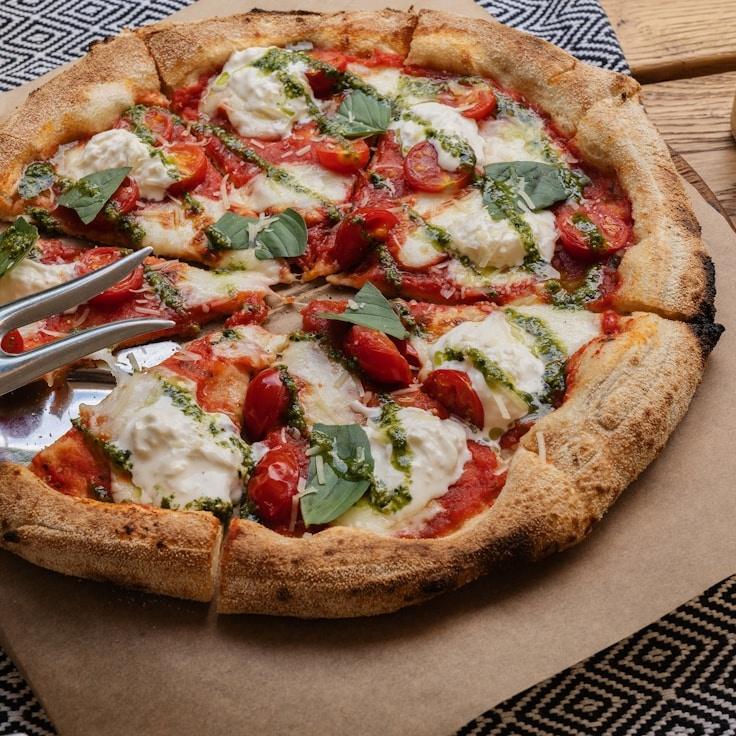At CleverBase, our philosophy is that superior pizza is built on superior dough. With over 30 years dedicated to refining our recipe, we're thrilled to divulge select insights with you. Although we hold back from disclosing our proprietary mix (certain rituals are to be kept hallowed!), these fundamental guidelines will enable you to craft pizzeria-quality pizza dough in your dwelling.
Significance of Flour Quality
The cornerstone for an outstanding pizza dough is premium flour. 00 flour is our recommendation; this fine Italian flour possesses a moderate protein content (about 12%), striking the ideal mix of strength and pliability. Should 00 flour elude you, bread flour works as an alternate, albeit the texture may alter slightly.
Hydration and Water's Thermal Properties
The dough's fermentation and development are influenced by the warmth of your water. Use chilled water at approximately 45°F (7°C) for extended fermentation that enhances flavor. Warmer water near 85°F (29°C) suits faster fermentation. Aim for a hydration level (water-to-flour ratio) of 60-70% for the typical household oven.
Reduced Yeast, Prolonged Fermentation
A critical secret to sapid dough is minimal yeast use twinned with prolonged fermentation. We utilize a scant 0.2% of fresh yeast relative to our flour weight, permitting fermentation that spans 24-48 hours. Such gradual fermentation cultivates intricate tastes and yields a digestible dough.
Role of Salt Beyond Flavoring
Salt not only enhances the dough's savor but also fortifies gluten strands and tempers fermentation. We advocate employing fine sea salt at 2.5-3% of the flour's weight. Merge it after the flour and water begin amalgamating to obstruct direct yeast contact.
Fermentation as an Art Form
Post-mixing, allow the dough a 2-hour bulk fermentation at ambient temperature, then subdivide into separate balls. Encase these in lidded containers and refrigerate for 24-72 hours. This chill fermentation phase is pivotal—enzymes decompose starches to sugars, enriching flavor and contributing to our crusts' exquisite browning.
Delicate Handling
Come pizza crafting time, extricate your dough from the cool confines 1-2 hours prior to baking. This brings it to temperate conditions. Caress the dough gingerly to maintain the gas bubbles formed. Push and spread the dough with your digits instead of rolling it out, as the latter would deflate those valued air pockets.
Ultimate Element: Intense Heat
While our ovens can attain an impressive 850°F (454°C), most residential ovens will cap at about 550°F (288°C). To make up for this, introduce a heated pizza stone or steel, preheated for a minimum of one hour. This technique delivers the searing heat necessary for a crisp crust and voluminous interior.
Perfecting pizza dough is a continual learning experience with each batch offering insight into the artistry of dough making. We invite you to document observations, tweak variables, and pinpoint the optimal methods for your home's kitchen environment.
For a closer look at our dough creation, consider participating in a monthly pizza workshop where Chef Alessandro illustrates these methods in greater depth. Visit our events calendar for forthcoming sessions!

